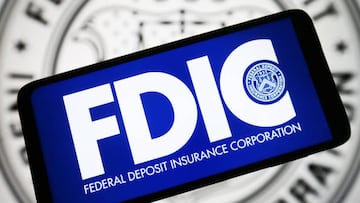How does FDIC insurance work? Are all bank accounts insured by the FDIC?
Depositors at Silicon Valley Bank will have their funds made available beyond FDIC levels. Why? What is the FDIC and which banks does it cover?


After the financial devastation caused by the Great Depression, the federal government established the Federal Deposit Insurance Corporation to protect depositors and set new rules for banks. Many of the strongest rules, which were included in the Glass-Steagel Act, were actually repealed in the late 1990s under Democratic President Bill Clinton. Less than a decade later, the Great Recession and the financial crisis on Wall Street left many seniors without a large hole in their retirement account, with millions more losing their homes and jobs.
Currently, there are just under five thousand banks under the supervision of the FDIC. Until last week, one of those institutions was Silicon Valley Bank (SVB), which collapsed under pressure from raising interest rates and a subsequent run by depositors. SVB was the sixteenth largest bank in the United States, and some of its clients included the financial tech company Circle, Etsy, and Roku.
On Monday 13 March, the FDIC announced that in light of the collapse “all deposits—both insured and uninsured—and substantially all assets of the former Silicon Valley Bank of Santa Clara,” had been transferred to a “full-service FDIC-operated ‘bridge bank.” Typically, the FDIC only insures up to $250,000 for qualifying accounts (which will be discussed below). However, with wealthy investors threatening federal officials that a total collapse of SVB could have devastating consequences for the economy, the Treasury Department announced that funds that were “uninsured,” would also be covered. No similar bailout ever came for the American families who lost so much during the Great Recession, some of which have never fully recovered from the devastating impact of the collapse.
What protections are offered by the FDIC?
More than protection for banks, the FDIC can provide peace of mind for depositors. In the case of SVB, the depositors included primarily tech companies, start-ups, and entrepreneurs.
According to the FDIC, the agency covers:
- Single Accounts (owned by one person): $250,000 per owner;
- Joint Accounts (owned by multiple persons): $250,000 per co-owner;
- Qualifying retirement accounts: $250,000;
- Revocable Trust Accounts: $250,000 per “unique beneficiary”;
- Corporation, Partnerships, and Unincorporated Association account: $250,000 per corporation, partner, or unincorporated association;
- Irrevocable Trust Account: $250,000 “for the noncontingent interest of each unique beneficiary”;
- Employee Benefit Plan Account: $250,000 “for the noncontingent interest of each plan participant”; and
- Government Account: $250,000 per official custodian.
SVB held many of these various account types and the speed at which the bank collapsed left many depositors in a risky position where they stood to lose billions collectively that were not insured by the FDIC. As regulators responded they have made these uninsured sums available through “fees that banks pay to the FDIC,” meaning, at this point, there will be no burden to taxpayers.
Read more from AS USA:
- What is the FDIC? How does it protect banks and deposits?
- What happens to savings and deposits of more than $250,000 if Silicon Valley Bank collapses?
What sort of accounts are not covered by the FDIC?
Related stories
As stated by President Biden, investors who took out risky bets with SVB, will not be protected. The FDIC does not offer coverage to “stock investments, bond investments, mutual funds, life insurance policies, annuities, municipal securities, safe deposit boxes or their contents, and U.S. Treasury bills, bonds or notes.”
Investors in the banks will not be protected.
— President Biden (@POTUS) March 13, 2023
They knowingly took a risk, and when risks don’t pay off, investors lose their money.
That’s how capitalism works.
What banks are insured by the FDIC?
There are thousands of banks with more than 81,000 branches across the country that are covered by the FDIC, and account holders at these institutions do not need to take any actions to ensure their funds are protected. The FDIC offers an online tool that allows users to find FDIC-insured banks, and if you have any doubts about your bank, you can check it out.

